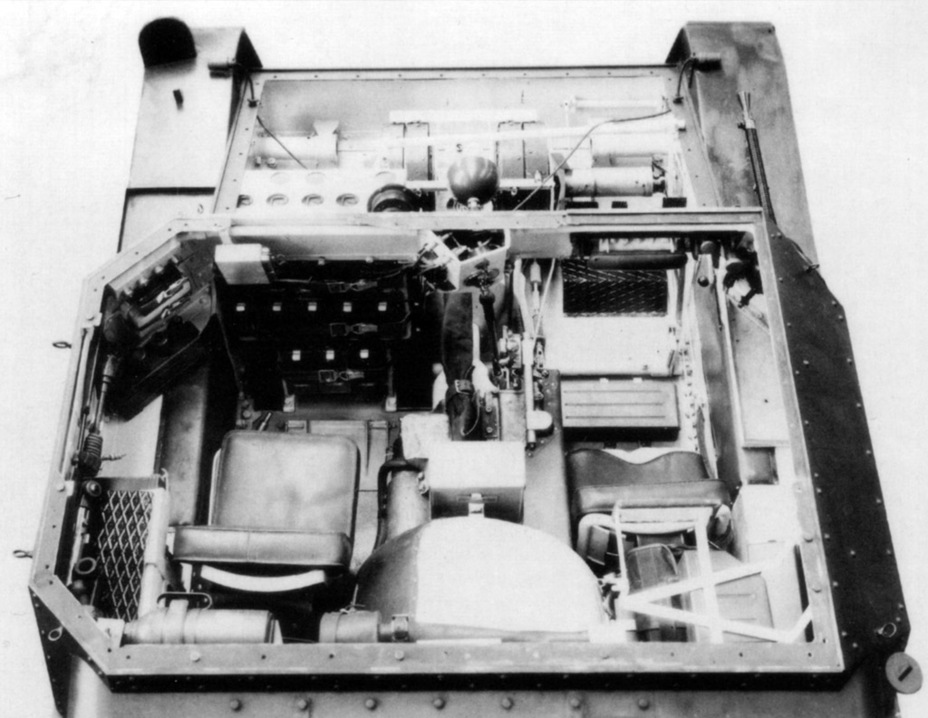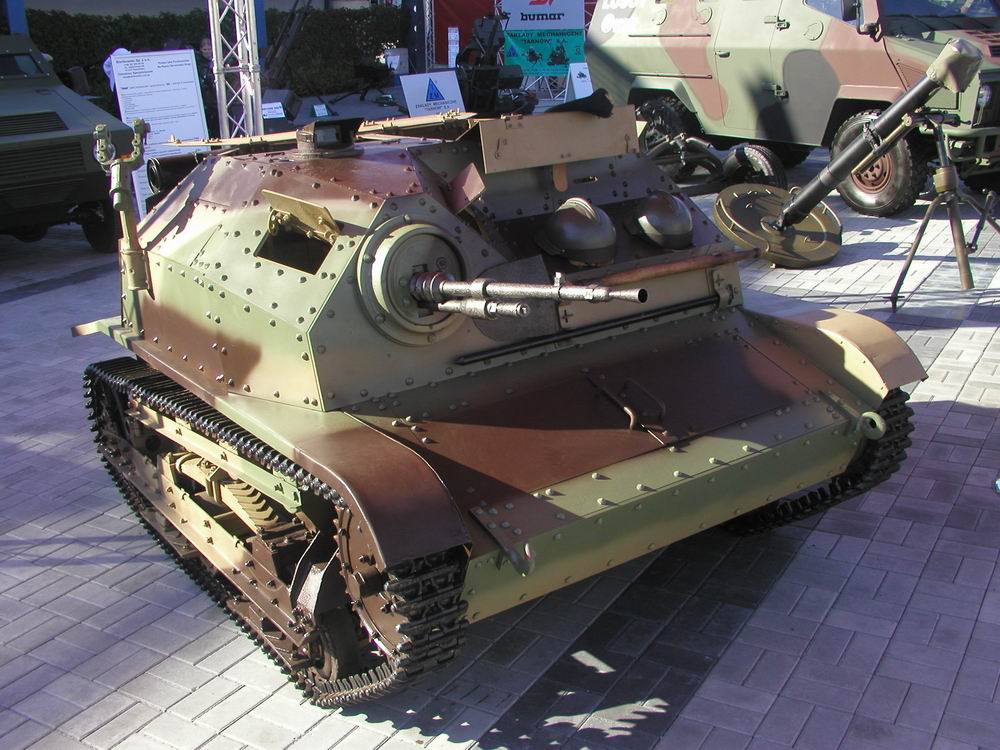|
AH-IV
The AH-IV was a Czechoslovak-designed export armored fighting vehicle, classed as either a tankette or light tank,Axworthy, p. 35 used by Romania during World War II, but having also been acquired by neutral Sweden and Iran. Modified AH-IV versions were built under license by Romania ('' R-1'') and Sweden (''Strv m/37''). The Romanian vehicles saw action on the Eastern Front from Operation Barbarossa to the Vienna offensive. Twenty vehicles were sold after the war to Ethiopia, who used them until the 1980s. Description Českomoravská Kolben-Daněk was determined not to repeat the problems of its earlier '' Tančík vz. 33'' tankette and gave the gunner a turret for better observation and all-around fields of fire for its new AH-IV tankette. It was assembled from a framework of steel "angle iron" beams, to which armor plates between thick were bolted. The driver sat on the right side using an observation port protected by bulletproof glass and an armored shutter. To his right ... [...More Info...] [...Related Items...] OR: [Wikipedia] [Google] [Baidu] |
R-1 Tank
The R-1 was a Romanian armored fighting vehicle production during World War II, Romanian-used tank that saw action during World War II within the mechanized Romanian cavalry. It was a modified version of the AH-IV, a Czechoslovakia, Czechoslovak-designed export vehicle, which was used exclusively by Romanian forces during the war. A number of 36 were used, 35 of which were built in Czechoslovakia, while one modified example was built in Romania under license. The R-1 is classified as either a light tank or tankette. In 1935, Romania sought to modernize its armored forces by acquiring tanks of different types. Multiple countries were contacted for this goal, among them being Romania's Little Entente allies of French Third Republic, France and First Czechoslovak Republic, Czechoslovakia, as well as Second Polish Republic, Poland (also Polish–Romanian alliance, an ally). The R-1 ended up being one of the vehicles acquired from Czechoslovakia. The vehicles were delivered to Romania ... [...More Info...] [...Related Items...] OR: [Wikipedia] [Google] [Baidu] |
Stridsvagn M/37
''Stridsvagn'' m/37 (Strv m/37) was a Swedish-built version of the Czechoslovak ČKD AH-IV tankette. History The AH-IV was popular with Romania and Iran, and after a successful demonstration to Swedish authorities, during winter conditions in the Krkonoše Mountains, Sweden ordered 48 AH-IV-Sv in 1937. Two of these were built in Czechoslovakia; the other 46 were built as the Strv m/37 under license by Jungner in Oskarshamn, with AB Volvo providing a more powerful engine, transmission, and tracks, the armor was made by Avesta. ČKD supplied most of the other components after building one prototype. The tankette was heavily modified, including the removal of the driver's machine gun. This variant was heavier and larger than the AH-IV. On the turret were mounted two Swedish-made machine guns, the ''8 mm Ksp m/36 strv'', and a commander's cupola. Inside the vehicle was room for a radio and the ammunition. In November 1938, the final components were shipped.Kliment and Francev, p. ... [...More Info...] [...Related Items...] OR: [Wikipedia] [Google] [Baidu] |
Romanian Armored Fighting Vehicle Production During World War II
During the Second World War, the Kingdom of Romania produced, converted or significantly improved a variety of armored fighting vehicles, ranging from licence-built unarmed artillery tractors to tank destroyers of an original design which ended up - according to some accounts - as inspiration for some German AFV. Beginnings Romania took its first step in developing an indigenous AFV industry in 1937, when a licence was acquired from France for the local production of 300 Renault UE armored tractors. It is worth noting that prior to this, not even repairs could be made in Romania, as the country had contracted Czechoslovakia for the repair of its increasingly obsolete and only partially operational fleet of 76 Renault FT-17 World War I-era light tanks. Production of the Renault UE was carried out in Romania between the latter half of 1939 and March 1941, but only 126 vehicles had been delivered. Although Malaxa, the Romanian Bucharest-based factory producing them, could manufacture ... [...More Info...] [...Related Items...] OR: [Wikipedia] [Google] [Baidu] |
ČKD
ČKD (Českomoravská Kolben-Daněk) () was one of the largest engineering companies in the former Czechoslovakia and today's Czech Republic. It is famous for the Tatra T3, a tramcar that sold 13,991 units worldwide. History ČKD was formed in 1927 from the merger of two smaller companies, Českomoravská-Kolben (founded 1896, produced machinery for hydro dams) and Breitfeld-Daněk (founded 1854, produced machinery for mines and food industry). From 1927 until 1929 ČKD's products included a motorcycle designed by Jaroslav František Koch. It was an advanced four-stroke single-cylinder unit construction double overhead camshaft design of 500cc. It was sold under the marque BD, thus perpetuating the Breitfeld-Daněk identity. In 1929 ČKD sold its motorcycle business to Praga Hostivař, which re-branded the motorcycles under the Praga marque. It was one of the main suppliers to the Czechoslovak state of military vehicles during the 1930s. During the German occupation of Cz ... [...More Info...] [...Related Items...] OR: [Wikipedia] [Google] [Baidu] |
R-1 Romanian Tank 4
R1, R.I., R01 or R-1 may refer to: Military equipment * R-1 tank, a Romanian tank from World War II * R-1 (missile), a post World War II Russian rocket * AEG R.I, a 1918 German super-heavy bomber design * DFW R.I, a 1916 German prototype bomber aircraft * HMS Caprice, a destroyer originally designated with Pennant Number R01 * Linke-Hofmann R.I, a World War I German prototype bomber aircraft * Polikarpov R-1, a Soviet Union copy of the 1931 British Airco DH.9A light bomber aircraft * USS R-1 (SS-78), a 1918 United States Navy R-class coastal and harbor defense submarine * a South African made version of the FN FAL battle rifle * a version of the 1942 German Rheintochter ground-to-air missile * Sentinel R1, a British airborne radar platform * a Romanian designation of the Czechoslovak-designed tankette AH-IV Transportation Automobiles * Jaguar R1, a British 1999 Formula One racing car * Javan R1, a British sports car * Nuro R1, an American autonomous van * Ora R1, a Chinese electr ... [...More Info...] [...Related Items...] OR: [Wikipedia] [Google] [Baidu] |
Tankette
A tankette is a tracked armoured fighting vehicle that resembles a small tank, roughly the size of a car. It is mainly intended for light infantry support and scouting.T-27 Tankette (from the 'battlefield.ru' website, with further references cited. Accessed 2008-02-21.) Colloquially it may also simply mean a small tank. Several countries built tankettes between the 1920s and 1940s, and some saw limited combat in the early phases of . The vulnerability of their light armour, however, eventually led armies to abandon the concept with some exceptions such as the more modern German Wiesel (Weasel) series. ...
|
Tankette
A tankette is a tracked armoured fighting vehicle that resembles a small tank, roughly the size of a car. It is mainly intended for light infantry support and scouting.T-27 Tankette (from the 'battlefield.ru' website, with further references cited. Accessed 2008-02-21.) Colloquially it may also simply mean a small tank. Several countries built tankettes between the 1920s and 1940s, and some saw limited combat in the early phases of . The vulnerability of their light armour, however, eventually led armies to abandon the concept with some exceptions such as the more modern German Wiesel (Weasel) series. ...
|
Operation Barbarossa
Operation Barbarossa (german: link=no, Unternehmen Barbarossa; ) was the invasion of the Soviet Union by Nazi Germany and many of its Axis allies, starting on Sunday, 22 June 1941, during the Second World War. The operation, code-named after Frederick Barbarossa ("red beard"), a 12th-century Holy Roman emperor and German king, put into action Nazi Germany's ideological goal of conquering the western Soviet Union to repopulate it with Germans. The German aimed to use some of the conquered people as forced labour for the Axis war effort while acquiring the oil reserves of the Caucasus as well as the agricultural resources of various Soviet territories. Their ultimate goal was to create more (living space) for Germany, and the eventual extermination of the indigenous Slavic peoples by mass deportation to Siberia, Germanisation, enslavement, and genocide. In the two years leading up to the invasion, Nazi Germany and the Soviet Union signed political and economic pacts for st ... [...More Info...] [...Related Items...] OR: [Wikipedia] [Google] [Baidu] |
Nicolae Malaxa
Nicolae Malaxa ( – 1965) was a Romanian engineer and industrialist. Biography Born in a family of Greek origin in Huşi, Malaxa studied engineering in Iaşi (at the University of Iaşi) and Karlsruhe (at the Polytechnic University). Late in his life, Petre Pandrea, a Romanian intellectual who was for long a member of the Communist Party and later became a victim of the Communist regime, wrote a memoir which, in part, dealt with Malaxa's biography, recording it with a dose of hostility. In it, he indicated that Malaxa's father died a young man, and that Nicolae was kept in university with money earned by his mother and sister.Pandrea, p. 65. Pandrea, who called Malaxa "a mama's boy" and argued that this had shaped his character, also noted that, after graduation and contrary to his family's wishes, the engineer married a divorcée (who had been married to one of his early business partners). In time, he claimed, tensions grew between the two Malaxas, after the "Puritan" Nic ... [...More Info...] [...Related Items...] OR: [Wikipedia] [Google] [Baidu] |
World War II
World War II or the Second World War, often abbreviated as WWII or WW2, was a world war that lasted from 1939 to 1945. It involved the vast majority of the world's countries—including all of the great powers—forming two opposing military alliances: the Allies and the Axis powers. World War II was a total war that directly involved more than 100 million personnel from more than 30 countries. The major participants in the war threw their entire economic, industrial, and scientific capabilities behind the war effort, blurring the distinction between civilian and military resources. Aircraft played a major role in the conflict, enabling the strategic bombing of population centres and deploying the only two nuclear weapons ever used in war. World War II was by far the deadliest conflict in human history; it resulted in 70 to 85 million fatalities, mostly among civilians. Tens of millions died due to genocides (including the Holocaust), starvation, ma ... [...More Info...] [...Related Items...] OR: [Wikipedia] [Google] [Baidu] |
Leaf Springs
A leaf spring is a simple form of spring commonly used for the suspension in wheeled vehicles. Originally called a ''laminated'' or ''carriage spring'', and sometimes referred to as a semi-elliptical spring, elliptical spring, or cart spring, it is one of the oldest forms of vehicle suspension. A leaf spring is one or more narrow, arc-shaped, thin plates which are attached to the axle and chassis in a way that allows the leaf spring to flex vertically in response to irregularities in the road surface. Lateral leaf springs are the most commonly used arrangement, running the length of the vehicle and mounted perpendicular to the wheel axle, but numerous examples of transverse leaf springs exist as well. Leaf springs can serve multiple suspension functions: location, springing, and to some extent damping as well, through interleaf friction. However, this friction is not well controlled, resulting in stiction and irregular suspension motions. For this reason, some manufacturers have ... [...More Info...] [...Related Items...] OR: [Wikipedia] [Google] [Baidu] |






.jpg)

.jpg)